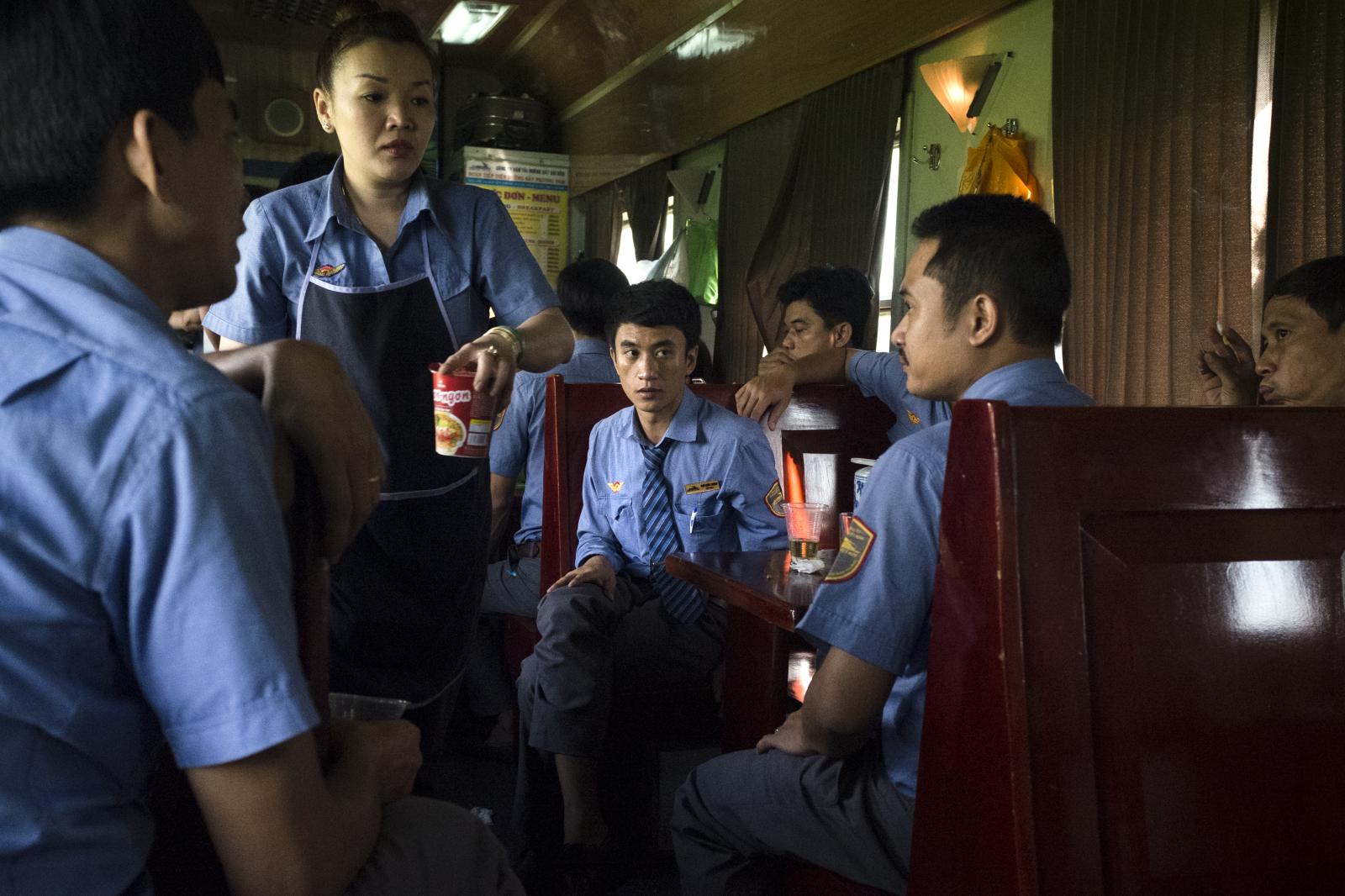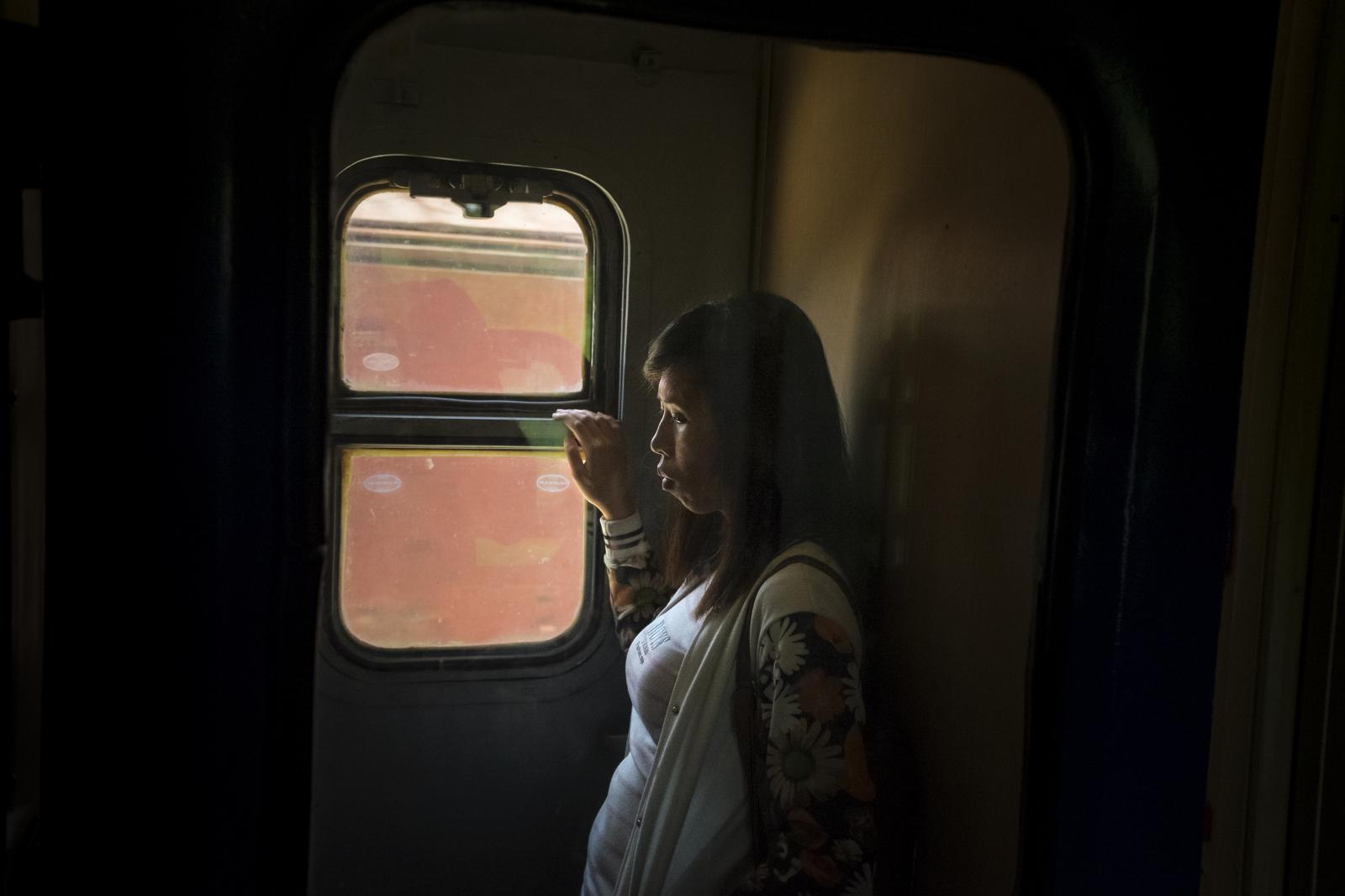Public Story
• South-North: l’Express de la Réunification (Vietnam)
Au départ de Hô Chi Minh-Ville au sud, "l’Express de la Réunification" doit parcourir 1 726 km avant de rejoindre le Nord du pays et sa capitale Hanoï.
Cette ligne est unique en son genre, de par son histoire et les rebondissements de sa construction. Débutée en 1901 par les colons français, elle sera finalement terminée en 1936. Elle portait à l'origine le nom de Transindochinois, et son histoire est à l’image de celle du Vietnam: dramatique. Elle subit des bombardements durant la seconde guerre mondiale, des opérations de sabotage par le Vietminh durant la guerre d'Indochine, ou encore des attaques amairicaines au Nord-Vietnam durant la guerre du Vietnam.
Ce n'est qu'à la fin des années 1990 que la ligne reprit un service comparable à celui qu’elle avait durant les années 1930, et ce après une longue campagne de réhabilitation. Cette ligne fonctionne toujours avec d’authentiques locomotives diesel-électriques.Aujourd’hui, outre le manque évident de moyens pour le réhabiliter dans son intégralité ,le Transindochinois ou Express de la Réunification, souffre de graves problèmes techniques. Ceci s’explique en majeure partie par le fait que les trains circulent sur une voie unique et étroite, limitant aussi la vitesse et le nombre de rames.Le voyage sur cette ligne nous transporte du Sud au Nord, du delta du Mékong au delta du fleuve Rouge. Elle permet une découverte unique de paysages épargnés par la frénésie de la croissance économique. Elle traverse les paysages typiques et bucoliques du Vietnam rural. Nous traversons des rizières d’un vert éclatant des vallées et des montanges tout en passant par des plages. Les villes, les villages et les hameaux défilent devant nos yeux.
Le train est le transport de tous : familles, étudiants, ouvriers, soldats... Dans les voitures, les conditions de voyage changent en fonction de votre budget. Les hard seat par exemple sont des sièges en bois, les moins cher donc. La densité des voyageurs y est de loin supérieure. Traverser un tel wagon est un vrai parcours du combattant car chaque espace est occupé de façon stratégique. La nuit, les banquettes et les nattes au sol servent de lits d’appoint, et les corps, harassés par la chaleur, se laissent bercer par le ballottement du train. Seuls les employés semblent évoluer avec une facilité déconcertante dans ce capharnaüm. Ils engagent leur chariot entre les sièges; ici et là les commandes fusent,des billets passent de main en main, et les boissons, friandises et plats, copieux et délicieux, circulent. Dans les wagons soft seat, l'atmosphère est moins agitée et les corps plus confortables grâce à la climatisation. Une moitié des sièges regarde l’autre moitié, à l’image des trains que nous connaissons.Le trajet de Hô Chi Minh-Ville à Hanoi est un voyage à travers le Vietnam à la découverte de ses habitants, ses traditions et sa culture.
Starting from Ho Chi Minh City in the south, the "Reunification Express" has to cover 1,726 km before reaching the north of the country and its capital Hanoi.
This line is unique in its kind, due to its history and the twists and turns of its construction. Started in 1901 by French settlers, it was finally completed in 1936. It was originally called the Transindochinois, and its history is like that of Vietnam: dramatic. It was bombed during the Second World War, sabotaged by the Vietminh during the Indochina War, and attacked by the Americans in North Vietnam during the Vietnam War.
It was not until the late 1990s that the line was restored to a service comparable to that of the 1930s, after a long rehabilitation campaign. Today, in addition to the obvious lack of means to rehabilitate it in its entirety, the Transindochinois or Reunification Express, suffers from serious technical problems. This is mainly due to the fact that the trains run on a single narrow track, which limits the speed and the number of trains.The journey on this line takes us from the South to the North, from the Mekong delta to the Red River delta. The journey on this line takes us from the South to the North, from the Mekong Delta to the Red River Delta, and offers a unique opportunity to discover landscapes untouched by the frenzy of economic growth. It crosses the typical and bucolic landscapes of rural Vietnam. We pass through bright green rice fields, valleys and mountains, while passing by beaches. Towns, villages and hamlets pass before our eyes.
The train is the transport of all: families, students, workers, soldiers... In the carriages, travel conditions change according to your budget. The hard seats, for example, are made of wood and are therefore the cheapest. The density of travellers is much higher. Passing through such a carriage is a real obstacle course because every space is strategically occupied. At night, the benches and mats on the floor serve as extra beds, and the bodies, exhausted by the heat, are rocked by the train's swaying. Only the employees seem to move with disconcerting ease in this mess. Here and there orders are placed, tickets are passed from hand to hand, and drinks, sweets and dishes, copious and delicious, are passed around. In the soft seat carriages, the atmosphere is less agitated and the bodies more comfortable thanks to the air conditioning. The journey from Ho Chi Minh City to Hanoi is a journey through Vietnam to discover its people, traditions and culture.

































